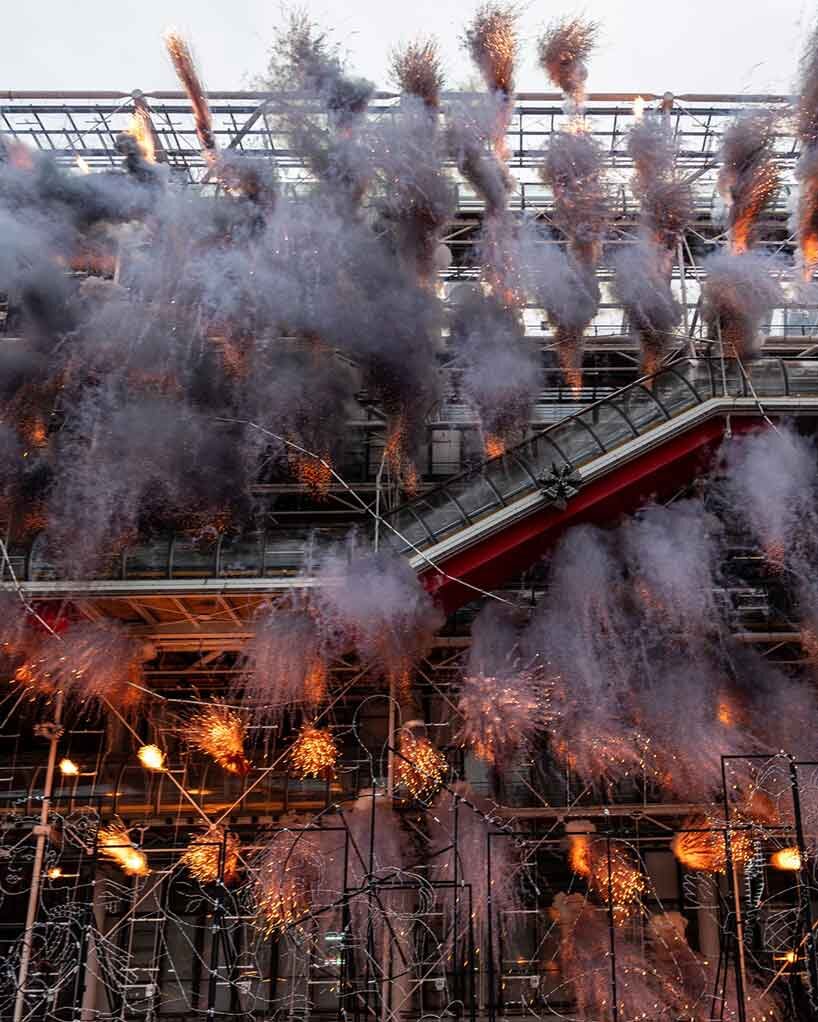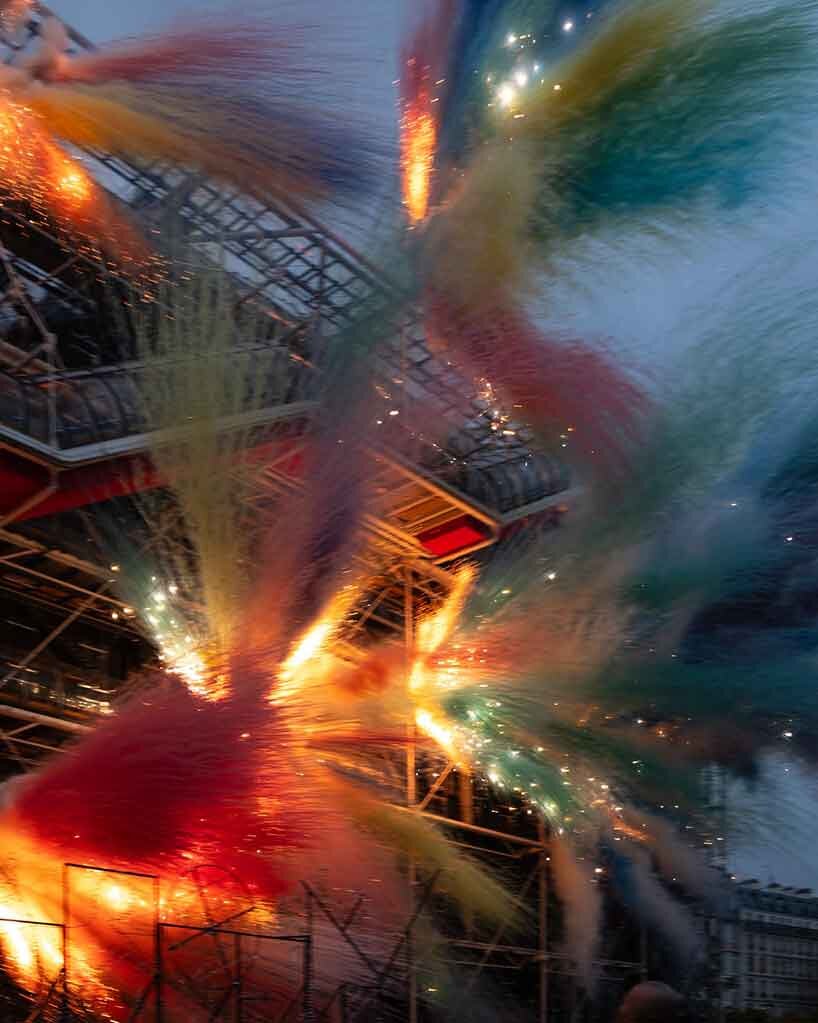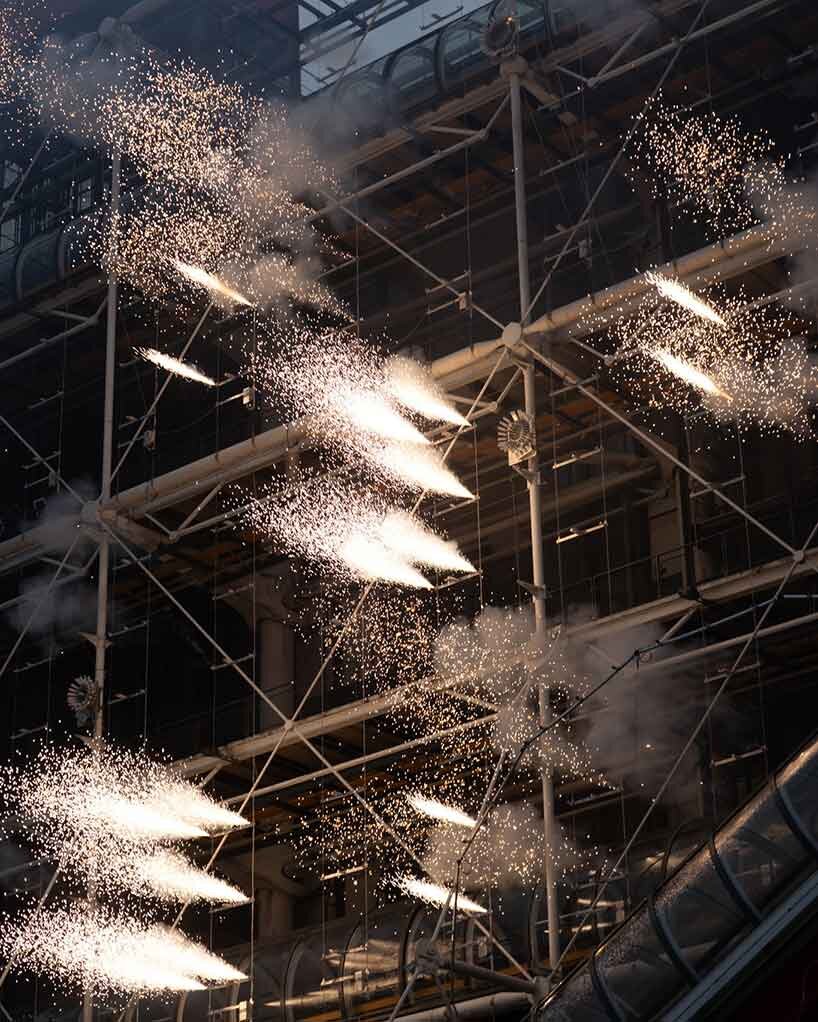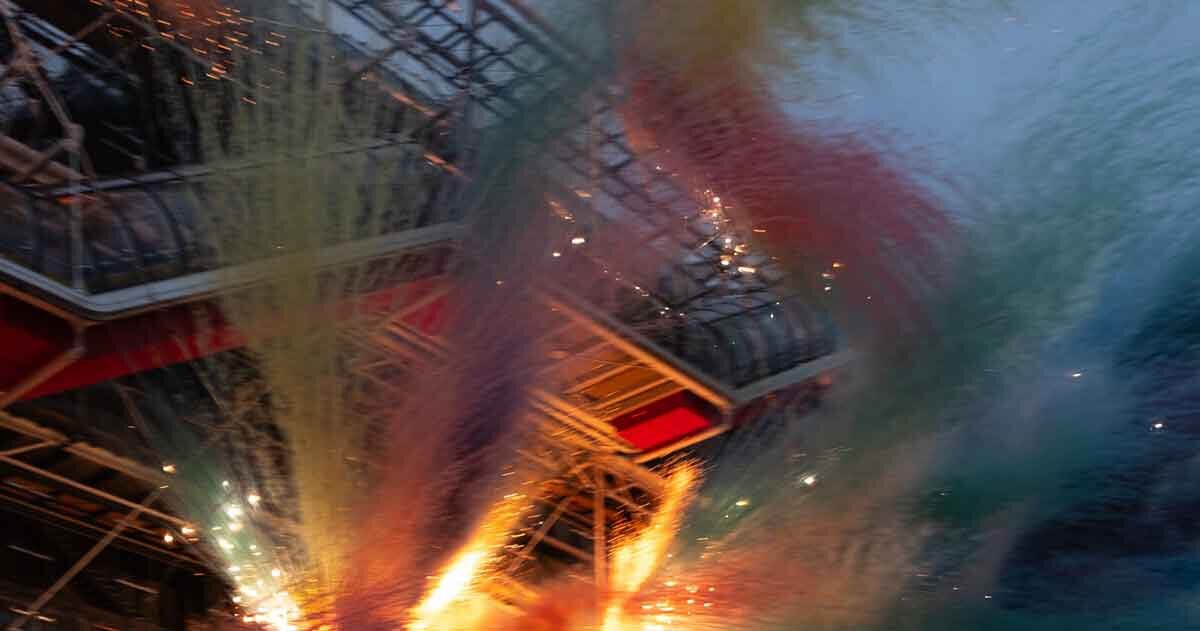A Closing Moment at centre pompidou
The Centre Pompidou in Paris closed on September 22nd for a five-year renovation. Before construction began, the museum invited artist Cai Guo-Qiang to create a final gesture across its facade. His public artwork, The Last Carnival, unfolded as a daylight fireworks event that turned the building’s exposed structure into a temporary canvas.
From the plaza at Beaubourg, the familiar tangle of ducts, glass, and steel served as both backdrop and participant. Smoke curled around the colored pipes. Powdered pigments hung in the air. The museum that had always revealed its inner workings — its escalators, its vents, its public spine — became for a brief time a surface for painting with fire. See designboom’s coverage of where to find the Centre Pompidou’s temporary and permanent exhibitions during its closure here.
Cai Guo-Qiang’s explosive artwork
Cai Guo-Qiang’s fireworks were designed to respond to the geometry of the Centre Pompidou rather than the open sky. The horizontal grids and cantilevered walkways shaped the rhythm of the explosions, each burst aligning with the structure’s industrial cadence. Instead of distant bursts, the firework trails seemed to breathe through the building’s framework, tracing its contours in light and smoke.
Seen from the forecourt, the architecture and atmosphere folded together. The clouds of color softened the hard edges of the steel frame. Shifting tones of red, gold, and violet drifted through the transparent facade, momentarily altering how daylight filtered into the plaza.

image © Centre Pompidou / Pierre Malherbet
The Role of Technology
For this project, Cai worked with his custom artificial intelligence model, cAI™, to generate the visual sequences. The software produced layered compositions that the artist translated into hand-laid charges of gunpowder. This dialogue between digital code and physical combustion gave the fireworks a quiet structure — an unseen logic guiding the choreography of light and form across the Pompidou’s surface.
Curator Jérôme Neutres described the event as the first time the museum’s facade became ‘a monumental painting.’ The description felt apt. The building, long a symbol of transparency and mechanical order, momentarily became an instrument of transformation, its familiar outlines animated by color and motion.

image © Centre Pompidou / Pierre Malherbet

image © Centre Pompidou / Pierre Malherbet

